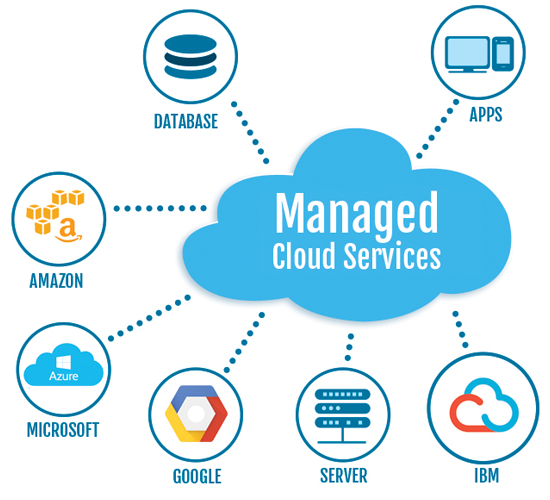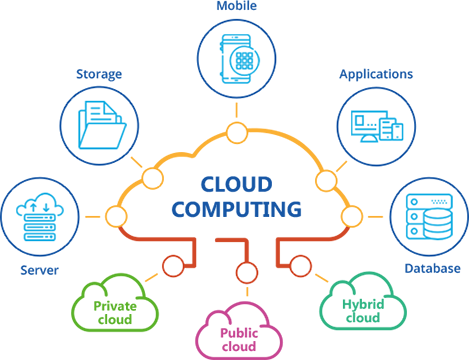LinkDaddy Cloud Services Decoded: Insider Insights into Universal Cloud Service Advancements
LinkDaddy Cloud Services Decoded: Insider Insights into Universal Cloud Service Advancements
Blog Article
Streamline IT Monitoring With Cloud Provider
Cloud solutions have emerged as a sensible option for businesses looking to boost effectiveness, lower costs, and boost overall IT efficiency. How precisely do these cloud solutions transform typical IT administration techniques? Let's check out the transformative influence of leveraging cloud services on IT procedures and the vital considerations for effective execution.
Benefits of Cloud Solutions

In addition, cloud solutions make it possible for companies to improve their operational efficiency by simplifying processes and minimizing the time and resources required for managing IT infrastructure. With cloud solutions, services can automate routine jobs, such as software updates and data back-ups, releasing up IT groups to concentrate on even more strategic initiatives that drive company value.
Boosted Scalability and Flexibility
Cloud services supply companies with unparalleled scalability and versatility in handling their IT resources efficiently. Scalability is an essential feature of cloud solutions that enables companies to easily readjust their IT resources based upon demand. With cloud services, businesses can rapidly scale up or down their computing sources, storage ability, and network transmission capacity to meet transforming demands without the need for considerable ahead of time financial investments in equipment. This flexibility makes it possible for organizations to adjust to fluctuating work, seasonal needs, or unexpected growth without experiencing downtime or performance issues.
Furthermore, cloud solutions provide the adaptability to pick from a range of service versions, such as Infrastructure as a Solution (IaaS), Platform as a Solution (PaaS), or Software Application as a Service (SaaS), based on the certain needs of the business. The improved scalability and adaptability offered by cloud solutions encourage organizations to maximize their IT procedures and stay agile in today's dynamic market environment.

Cost-Effectiveness and Savings
With the ability to efficiently allot resources based on demand, organizations using cloud solutions can harness substantial cost-effectiveness and understand substantial financial savings in their IT procedures. Cloud services use a pay-as-you-go design, permitting companies to only pay for the resources they make use of, removing the requirement for big in advance financial investments in software and hardware. This scalability makes sure that companies can conveniently adapt to varying demands without spending beyond your means on unnecessary resources. Additionally, cloud solutions decrease maintenance prices by shifting the responsibility of hardware maintenance and software updates to the provider. This decreases the need for devoted IT staff to take care of framework, further cutting down operational expenses. Furthermore, the cloud supplies economic climates of range, with service providers spreading out prices throughout numerous clients, causing lower private expenses for solutions like storage and computer power. On the whole, the cost-effectiveness and financial savings accomplished through cloud services enable companies to reallocate resources in the direction of technology and growth campaigns.
Improved Security and Conformity
Enhancing the total protection stance and making certain regulative conformity are critical considerations for organizations leveraging cloud solutions in their IT administration approaches. Cloud solution companies use innovative security procedures, such as data encryption, multi-factor verification, and automated review back-ups, which can strengthen a firm's protection structure. These suppliers also comply with rigorous governing criteria, such as GDPR, HIPAA, and PCI DSS, aiding businesses satisfy conformity needs a lot more effectively.
Carrying out cloud solutions can improve security by providing systematized control over accessibility administration, surveillance, and data defense. This centralized approach simplifies safety monitoring and makes sure constant application of security navigate to this website policies across the company. Furthermore, cloud services commonly supply real-time safety updates and spots, decreasing the threat of vulnerabilities and prospective breaches.
Ideal Practices for Cloud Implementation
Carrying out cloud solutions effectively needs a structured strategy that includes detailed planning and diligent execution. To make sure a smooth shift to the cloud, organizations ought to begin by conducting an extensive analysis of their present IT facilities and determining which workloads appropriate for migration. It is necessary to develop clear purposes and define key performance indicators (KPIs) to gauge the success of the cloud execution.
One of the most effective methods for cloud execution is to very carefully choose a cloud service company that straightens with the organization's needs in terms of safety and security, conformity, cost-effectiveness, and scalability. Additionally, producing an in-depth migration plan that describes the steps involved, timelines, and duties is critical for an effective application.
Consistently enhancing and monitoring cloud resources to make certain efficient performance and cost administration is one more essential element of cloud implementation ideal practices. Continual evaluation of the cloud atmosphere and remaining educated concerning updates and brand-new attributes used by the cloud service provider can even more improve the company's cloud approach. By adhering to these ideal techniques, companies can streamline their IT management and optimize the advantages of cloud services.
Conclusion
In conclusion, leveraging cloud services for IT management offers countless advantages, including enhanced scalability, cost-effectiveness, boosted protection, and compliance. By complying with finest techniques for cloud execution, companies can streamline their IT procedures, automate regular tasks, and optimize source appropriation. This structured technique allows IT teams to blog here concentrate on tactical initiatives and technology, ultimately providing value to the company. In general, cloud services improve functional performance and agility in managing IT facilities.
Additionally, cloud solutions provide the flexibility to choose from a variety of service designs, such as Infrastructure as a Service (IaaS), Platform as a Solution (PaaS), or Software Application as a Service (SaaS), based on the details requirements of the business. In addition, cloud services decrease maintenance prices by moving the responsibility of equipment maintenance and software application updates to the service supplier.Enhancing the overall security posture and making certain regulative conformity are paramount considerations for services leveraging cloud services in their IT monitoring techniques.On a regular basis keeping track of and maximizing cloud sources to guarantee reliable efficiency and cost administration is an additional vital facet of cloud implementation best methods. Continual evaluation of the cloud atmosphere and remaining educated about updates and new functions supplied by the cloud provider can additionally boost the organization's cloud technique.
Report this page